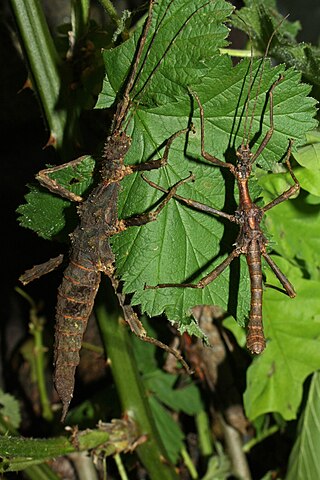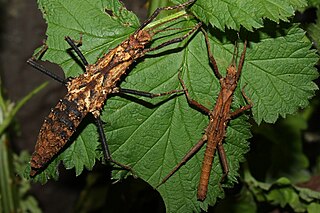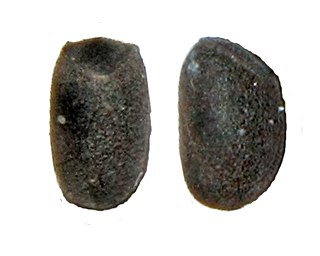
Sungaya is a genus of stick insects which is endemic to the Philippine island of Luzon.

The genus Tisamenus native to the Philippines combines small to medium-sized species of stick insects.

Aretaon is a genus of stick insects native to Borneo and the Philippine island Palawan.

Trachyaretaon is a genus of stick insects native to the Philippines.

Eubulides is a stick insect genus native to the Philippines.

Orestes mouhotii is an insect species belonging to the order of Phasmatodea. Because of its synyonym Orestes verruculatus, it is the type species of the genus Orestes. Because of its compact body shape, the species is sometimes referred to as small cigar stick insect.

Orestes guangxiensis is a representative of the genus Orestes.

Tisamenus serratorius is a stick insect species that occurs on the Philippine island Luzon.

Tisamenus deplanatus is a stick insect species native to the Philippine islands Luzon and Mindanao occurs.

Tisamenus fratercula is a stick insect species native to the Philippine island Luzon.

Tisamenus clotho is a stick insect species native to the Philippines.

Heterocopus is a monotypic stick insect genus, containing Heterocopus leprosus as the only valid species.

Stenobrimus is a genus of medium-sized stick insects native to the Philippines.

The genus Euobrimus is a Philippines-native stick insect genus that is very similar or synonymous with the genus Brasidas.

Euobrimus cavernosus is a representative of the stick insects native to the Philippines. It is considered one of the largest species in the subfamily Obriminae.
Pterobrimus is a monotypic genus of stick insects (Phasmatodea), containing the species Pterobrimus depressus, which is native to Fiji.

Tisamenus ranarius is a stick insect species (Phasmatodea), in the family of the Heteropterygidae native to the Philippines.

Tisamenus hystrix is a stick insect species (Phasmatodea), in the family of the Heteropterygidae endemic to the Philippines.

Tisamenus lachesis is a stick insect species (Phasmatodea), in the family of the Heteropterygidae endemic to the Philippine Polillo Island.
Tisamenus cervicornis is a stick insect species (Phasmatodea), in the family of the Heteropterygidae endemic to the Philippine island Luzon in the province of Camarines Sur.


















